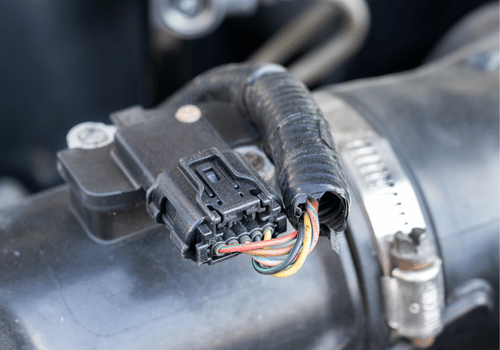What Does a Mass Air Flow Sensor Do?

Knowing the functions of a vehicle's mass airflow sensor (MAF) will not only help you better understand how your engine works but will help you identify a faulty air flow sensor. Read on to learn more about the various functions that your mass airflow sensor provides and what can happen if it starts malfunctioning.
A mass airflow sensor calculates the oxygen flowing to your engine for the ideal air-to-fuel ratio. The mass airflow sensor helps to increase engine efficiency by doing so.
Most cars use the hot wire principle when it comes to the airflow sensor. It relies on two sensors: one electrically-heated sensing wire and one temperature sensing wire.
The engine throttle opens when you press on the gas, allowing more air to flow around the hot wire. The more air is let in, the more electric current is needed to keep the wire hot.
An electronic chip and PCM work with the airflow signal to calculate how much fuel needs to be injected. This measurement helps keep the air to fuel ratio at the optimal level and gas mileage at a bay.
Signs of a Failing Mass Airflow Sensor
Over time, surrounding air, dirt, and other external debris can get into the sensor when you drive. Once the MAF becomes contaminated, it will stop working. Below are some signs that indicate a worn MAF:
- Rough Running or Idling
- Difficulty Starting Engine
- Problems Accelerating
- Increase Fuel Consumption
- Engine Drag
Causes of Mass Airflow Sensor Failure in Your BMW
Knowing the warning signs of mass airflow sensor failure and taking preventative maintenance measures can help keep your MAF working longer. When overlooked, an airflow sensor failure can lead to other damages, so you should take your car to a trusted auto repair shop right away.
If your MAF sensor needs repairs, look no further than the experts at Eurotech Auto Service.
More Automotive Service Posts










